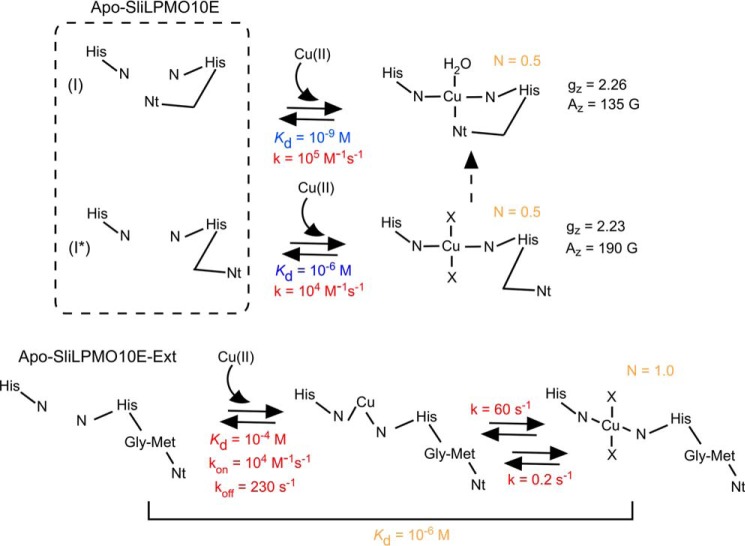FIGURE 9.
Mechanism of Cu(II) binding to SliLPMO10E and the N-terminal extension variant SliLPMO10E-Ext. Dissociation constants (Kd) and rates (k) for Cu(II) binding are reported in blue (ITC measurement) and red (stopped-flow kinetics), with parameters obtained from both experimental approaches given in orange, including the stoichiometry of Cu(II) binding (N). The gz and Az values determined by EPR for the two Cu(II) species in WT SliLPMO10E are reported. The minimum number of ligands for Cu(II) is four. X represents either H2O or chloride ligand depending on the experimental conditions (i.e. high or low NaCl) with chloride more likely under the high NaCl conditions based on the gz value obtained by EPR.

